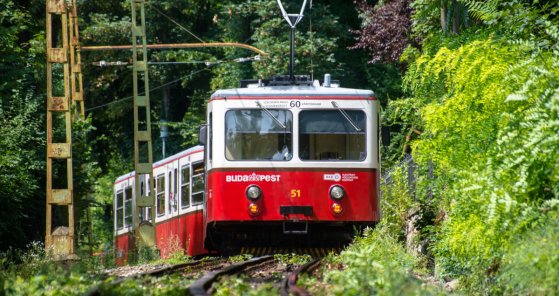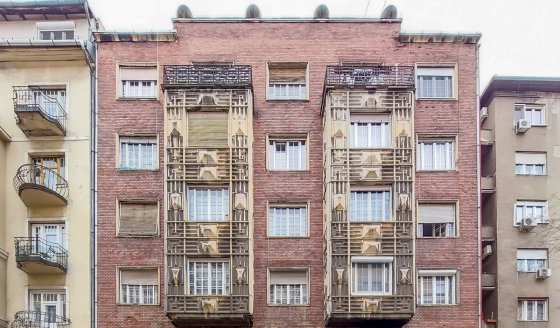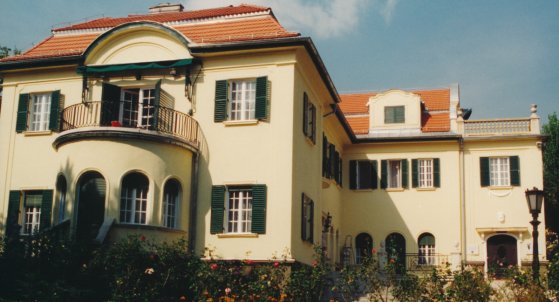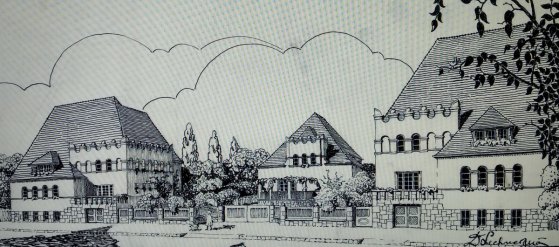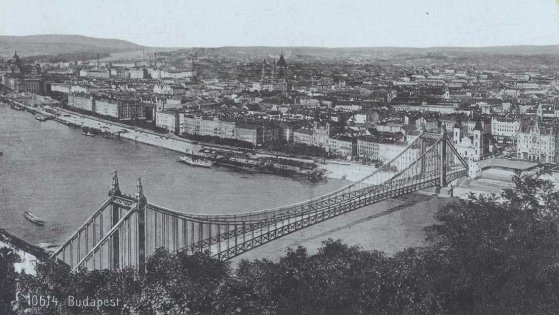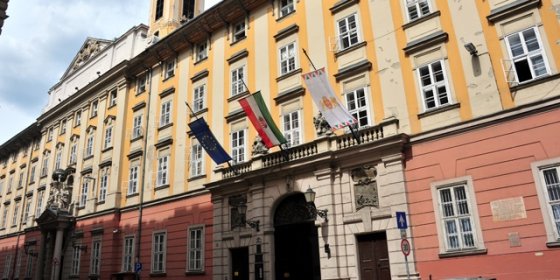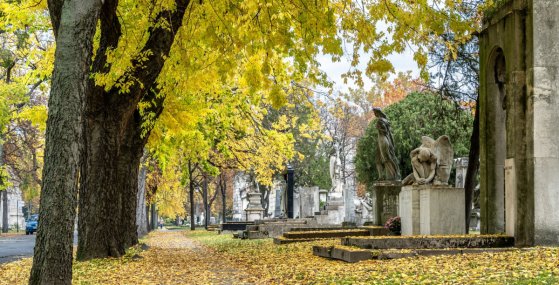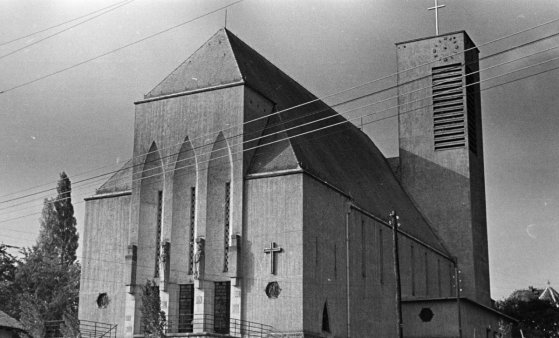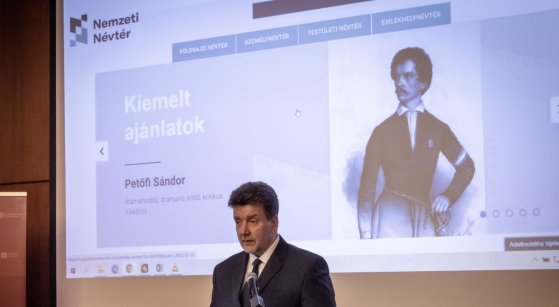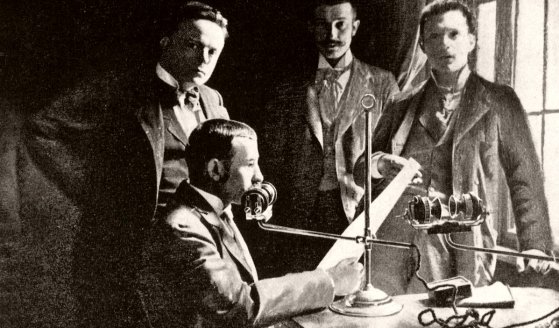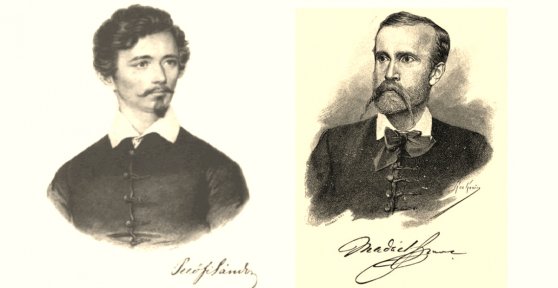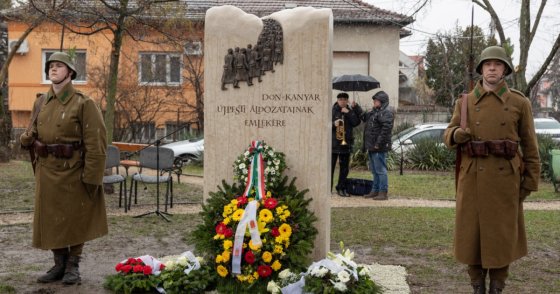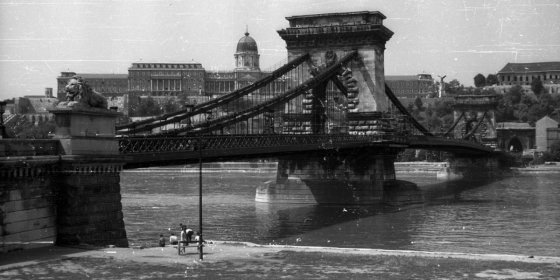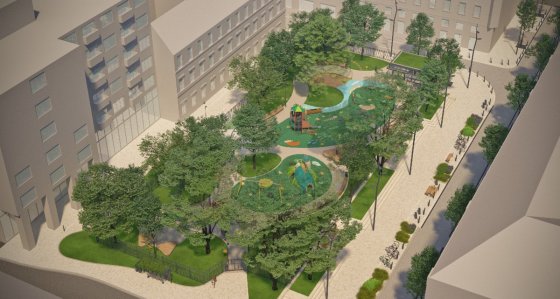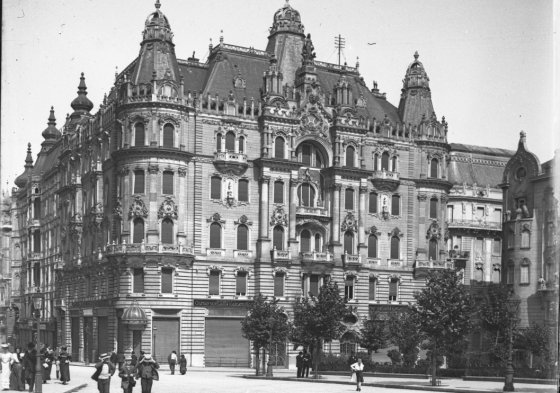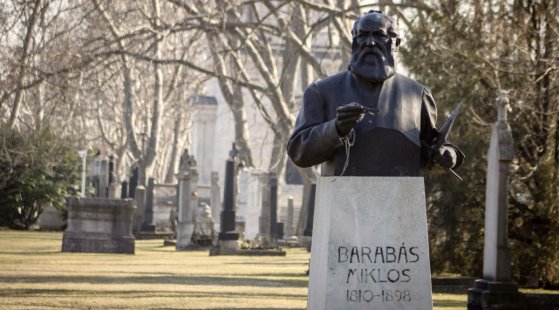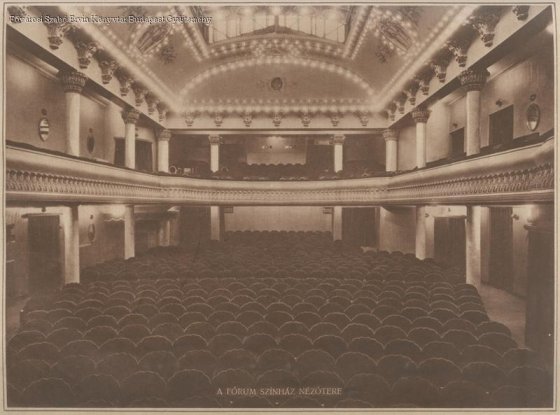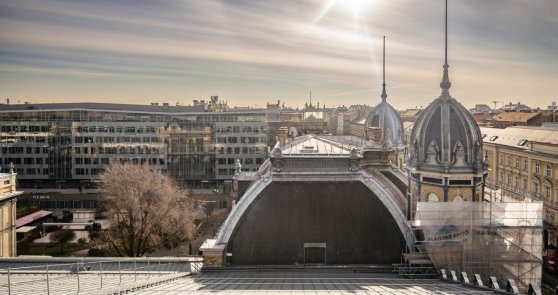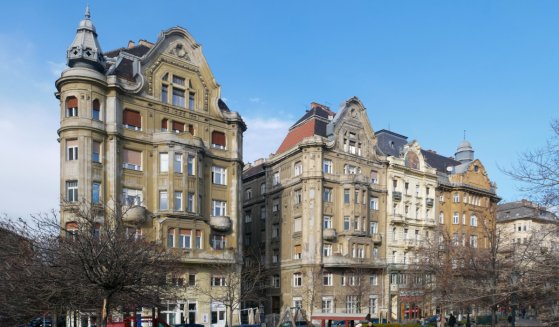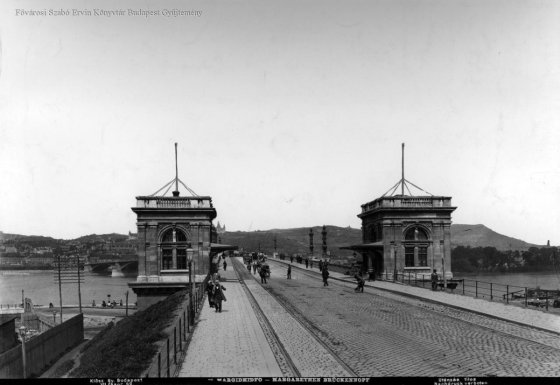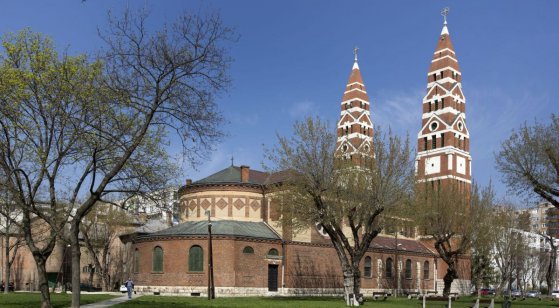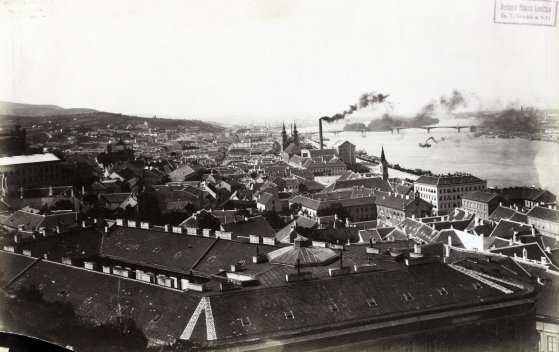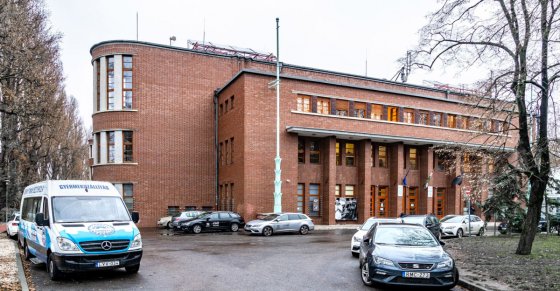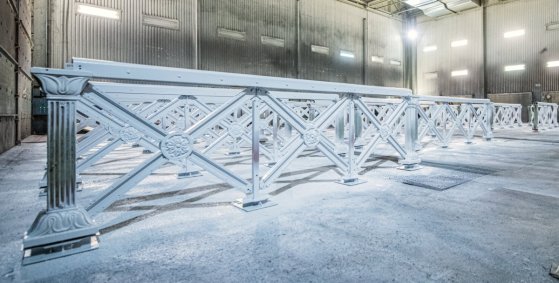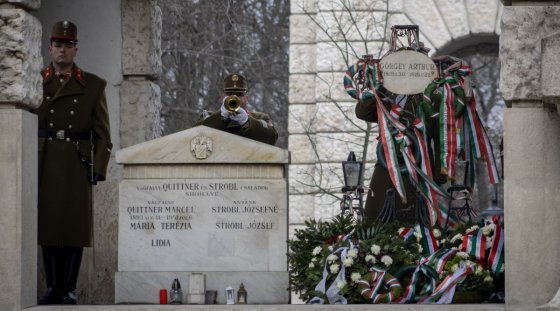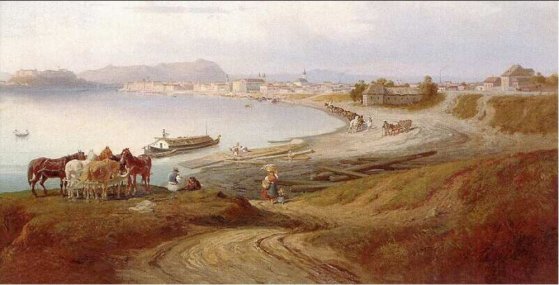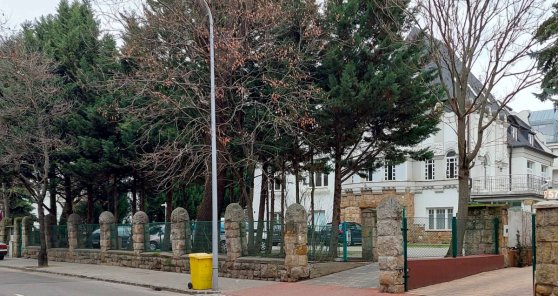 The „intertwined history” of the bridges and the city of Budapest
Which ideas and events have shaped the fate of bridges of Budapest and the cityscape? Alongside many other interesting facts, this question is also answered this newly published book by the Budapest City Archives, which introduces the history of bridges in Budapest.
The „intertwined history” of the bridges and the city of Budapest
Which ideas and events have shaped the fate of bridges of Budapest and the cityscape? Alongside many other interesting facts, this question is also answered this newly published book by the Budapest City Archives, which introduces the history of bridges in Budapest.
Budapest
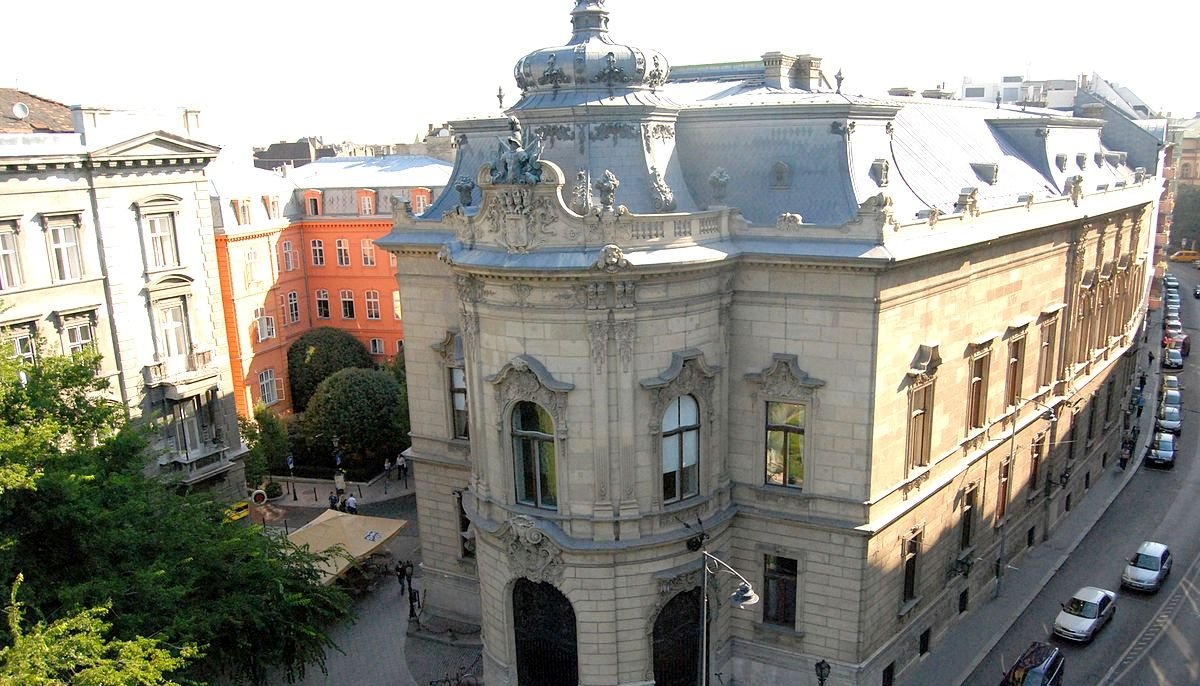 From eclecticism to brutalism: Budapest's protected buildings are presented
From eclecticism to brutalism: Budapest's protected buildings are presented
March 2, 2023 at 4:00 PM
The exhibition titled "From Eclecticism to Brutalism: Architectural Assets Excavated in Budapest between 2017-2022" opens today at the Metropolitan Ervin Szabó Library. Through the buildings that have been placed under local protection in the past five years, the exhibition presents the change of architectural styles found in the capital from the end of the 19th century to the beginning of the 1970s.
The cogwheel restarts in April
March 1, 2023 at 5:00 PM
The cogwheel railway will start again on 1 April, the track was renovated during the winter break. It is a novelty that this summer the open nostalgia train will run several times between Városmajor and the Széchenyi Hill terminus.
The small mirror of Art Deco - The lesser-known side of Frigyes Spiegel, who died 90 years ago
February 28, 2023 at 10:00 AM
Frigyes Spiegel wrote himself into the history of Hungarian architecture with his fantastic facades: his Art Nouveau buildings are the earliest appearances of the new style in the country. His genius naturally followed the changes of the times, and between the two world wars, he also left his mark on Art Deco - even if only to the extent of a single building. However, the historical circumstances also increase the value of this work of his, which also belongs to the elite in its category.
The story of the preservation of a factory building in Ferencváros
February 26, 2023 at 4:00 PM
The Laboratory Equipment Factory, completed in January 1963 at the corner of Tűzoltó Street and Thaly Kálmán Street, defined the streetscape of the neighbourhood for decades. Even when hundreds of workers worked in the building with a huge floor area, and even when it stood empty after 1990 and its condition deteriorated year by year. Nowadays, a modern dormitory, mainly inhabited by foreign university students, operates behind the walls, the new function also meant the rebirth of the building.
The Gizi Bajor Actors' Museum is reopening its doors
February 24, 2023 at 7:00 PM
On 1 March, the Gizi Bajor Actors’ Museum in the 12th District reopens, where permanent and temporary exhibitions await those interested in theatre art. A villa walk is also held in the former home of Gizi Bajor, a permanent member of the National Theatre. Visitors can discover the secret spaces of the building that have been hidden from the public until now, from the basement that once hid refugees to the attic, as well as the mysterious corners of the garden.
Where a movie star lived 100 years ago - Kálmán Rózsahegyi's villa
February 24, 2023 at 9:00 AM
Kálmán Rózsahegyi was one of the greatest actors of the first half of the last century, in addition to his stage presence, he also played in many cult films. For his fiftieth birthday, his fans wanted to surprise him with a family house, for which they started a fundraiser. The plans were drawn up by Jenő Lechner a hundred years ago, in 1923, and he created a sumptuous luxury villa with his brilliant idea and great sense of style. Three years later, the actor was able to occupy his new home after returning home from the United States of America.
Budapest then and today – 5 photos showing how much the city has changed
February 23, 2023 at 4:00 PM
The capital, which is 150 years old this year, has changed so much over time that every day citizens can marvel at a section of a street, an old building that has disappeared or that has miraculously survived. This time, with the help of five pairs of images, Pestbuda presents the passage of time from the houses of the old inner city of Pest to the flood in Tabán.
The capital decided on the naming of two public areas
February 22, 2023 at 6:15 PM
The decision to name Diana Lane (Diana köz) located in Hegyvidék was made in 1985, and it has now been officially registered, and the hitherto anonymous continuation of the public area was also named Diana Lane. And in the 20th District, the name of Vereckei Street was clarified to the currently used Verecke Street.
A memorial site is being prepared in the Fiumei Road Cemetery for Hungarians whose resting place is not in the country
February 21, 2023 at 6:30 PM
The National Heritage Institute wishes to create a symbolic place of remembrance in the Fiumei Road Cemetery, which serves as a memorial site for all the former compatriots who do not have a resting place within Hungary's borders, either because their graves are located in other countries, or because the 20th century's traumatic events did not allow them to be buried anywhere.
Gemstone along the Devil's Trench - The idea of the emerald church was born 90 years ago
February 21, 2023 at 2:00 PM
A fantastic church is hidden among lavish villas, just a few hundred metres from the tram terminus in Hűvösvölgy. Its modern forms suggest that it was built in the 20th century, but visitors might not even imagine how long the work took - competing with medieval cathedrals, it was completed in several decades. However, the result was equally brilliant, the Gothic and modernism are perfectly combined in it. The idea of building the church in Remetekertváros was born ninety years ago, in 1933.
The Hungarian National Name Directory was expanded in cooperation with OSZK and NÖRI
February 20, 2023 at 8:00 PM
The National Széchényi Library and the National Heritage Institute presented the new results of the expansion of the Hungarian National Name Directory. Thanks to the cooperation, from 16 February, the material of the Personal Name Directory, Geographical Name Directory and Board Name Directory will be connected to the database of memorial places, in which memorial places across the border will also appear. The digital interface is an interconnected network of people, geographical places, bodies, and memorial sites that are important for national memory, and is accessible to everyone.
It preceded the radio: The telephone herald was a Hungarian invention that delivered the news to the public immediately
February 20, 2023 at 3:00 PM
When, thanks to Tivadar Puskás's invention, the Telephone Herald began operating in Budapest on 14 February 1893, radio broadcasting was still an unknown concept. The service, which delivered news read into a microphone via the telephone network, attracted the interest of the general public, which is not surprising. During these years, the Hungarian capital was under enormous development: palace-like public buildings and residential houses were completed one after the other, trams were already running on the roads, and the organisation of the millennium celebrations was in full swing, meaning that the new invention arrived in an optimistic era.
The young loves of Madách and Petőfi
February 19, 2023 at 11:00 AM
In a voice of unclouded happiness, Imre Madách told his brother about the ball at which he danced with the love of his youth, Menyhért Lónyay's sister, Etelka Lónyay, but the unrequited love did not turn into a proposal. Petőfi had the courage to ask the daughter of a rich banker for her hand in marriage, but she offered it to Menyhért Lónyay. In connection with this year's Madách and Petőfi anniversaries, Pestbuda recalls the loves of youth, offering a glimpse into the world of reform-era balls.
A monument was erected in Újpest to the soldiers who died at the Don River
February 16, 2023 at 8:00 PM
A memorial was inaugurated in the 4th District in honour of the Újpest soldiers who fell at the Don River in World War II. The work depicts the last marching column of soldiers marching far into the distance, on the reverse side of which five soldiers' graves can be seen.
The Chain Bridge was closed 50 years ago as well
February 16, 2023 at 1:30 PM
The Chain Bridge was closed 50 years ago as well, as after its reconstruction in 1949, it needed to be renovated again. The works were timed for the 100th anniversary of the unification of Pest, Buda and Óbuda. The old painting had to be removed from a surface of 73,000 square metres, but at that time the 1949 coat of arms was also replaced with the version current in 1973.
Hild Square in the 5th District will be beautified by autumn
February 13, 2023 at 6:00 PM
Many people do not even know that Hild Square in the 5th District, which is being renovated, did not exist as a public space before, because there was a building here until 1944-45. The basement level of the destroyed house has remained to this day, which makes it difficult to replace the soil. Despite the difficulties, many new trees will be planted, there will be new shaded areas, vertical green surfaces, new public benches, a table tennis table and an accessible playground. Residents of the area can take possession of the renovated area in autumn.
There was once a theatre in the Class Lottery Palace - The history of the theatre began 105 years ago on Eskü Square
February 12, 2023 at 9:00 AM
Where cars turn down today from the Erzsébet Bridge to the Pest embankment, before World War II, there stood a huge and beautiful building: the Class Lottery Palace. It was built at the turn of the century in the Neo-Baroque style, but Art Nouveau also left its mark on it. However, its interior was remodelled several times, most significantly for Vilma Medgyaszay's theatre. Jenő Lechner made its classicist plans in February 1918, exactly 105 years ago.
The meeting of two brilliant Hungarians with the florist - Donát Bánki and János Csonka patented the carburettor 130 years ago
February 11, 2023 at 1:00 PM
For a long time, the carburettor was an essential part of car engines. Its creators, János Csonka and Donát Bánki applied for a patent for this device on 11 February 1893. According to legend, the two friends got the idea while watching a flower seller on the Inner Ring Road.
The 125th anniversary of the death of Miklós Barabás was commemorated in the Fiumei Road Cemetery
February 10, 2023 at 2:00 PM
Miklós Barabás was one of Hungary's most significant artists, and on the occasion of the 125th anniversary of his death, a wreath was laid on Friday at his tomb in the Fiumei Road Cemetery, which was made by Ede Telcs. It was said at the event: the portraits of the painter are important documents of the era, indispensable sources of Hungarian memory.
A miracle in Budapest - The first talking film was greeted with thunderous applause 95 years ago
February 9, 2023 at 10:00 AM
The former Fórum cinema in Budapest played a key role in the spread of the sound film, which on 9 February 1928 presented a work in which people could hear the aeroplane buzzing, the goose cackling and the cows mooing.
The renovation of Nyugati Railway Station continues with spectacular developments
February 6, 2023 at 7:00 PM
In addition to the renovation of the north-west tower on the Teréz Boulevard facade of the Nyugati Railway Station, work will also begin on the south-east tower. The protective roof in front of the renewed facade is expected to be demolished in autumn.
Architect Ernő Schannen was a master of residential houses - He mastered design in the office of Ybl and Hauszmann
February 5, 2023 at 1:00 PM
Ernő Schannen is a little-known member of the architectural community at the turn of the century. However, his work significantly contributed to the development of Budapest's cityscape, he developed a unique style, in Pest and Buda we can find residential houses designed by him in many places, but he also created a hospital and a bank building, and also castles in the countryside.
Who should pay for the bridge? - The Pest and Buda horse-drawn railway companies merged 145 years ago
February 4, 2023 at 2:00 PM
The desire to save money forced the merger of the Pest and Buda horse-drawn railway companies because horse-drawn railway traffic was only allowed on Margit Bridge if the companies paid the additional cost of the wider bridge. Since the two companies could not agree on the use of the bridge, 145 years ago the larger, richer company bought the smaller one instead. This made it possible for horse-drawn railway transport to start between Pest and Buda a year later, in 1879.
Ernő Foerk, who built a church in a slum, was born 155 years ago
February 3, 2023 at 9:00 AM
Ernő Foerk is not one of Hungary's famous architects, but almost everyone knows his main work, the Votive Church of Szeged. A building very similar to it can also be found in Budapest, namely in Tripolisz of the 13th District, which was one of the capital's scariest neighbourhoods. The St. Michael's Parish Church, consecrated in 1930, brought light to the part of town with a dubious reputation.
On the way to Greater Budapest
February 2, 2023 at 12:30 PM
The area of Budapest has changed several times in the last 150 years. The unification of 1950, the creation of today's Budapest, did not come out of nowhere, at that time there had already been talking about developing Budapest and its surroundings for decades, and harmonising the ideas.
The first Hungarian Olympic champion became a famous architect - Alfréd Hajós was born 145 years ago
February 1, 2023 at 11:00 AM
Hungary is considered a great power in water sports, which was already foreshadowed by the glory of our first Olympic champion: Alfréd Hajós won Hungary's first gold in swimming. At the Athens competition, he was only eighteen years old, so he had to choose a career after his victory, and the swimmer nicknamed the Hungarian Dolphin became an architect. In the first half of the 20th century, Alfréd Hajós, who was born 145 years ago, achieved good results in this field as well, his works were of the high standard of the era.
The railings of the Chain Bridge are being painted
January 31, 2023 at 7:30 PM
They are already painting the railings and historical elements returning to the sidewalks of the Chain Bridge. A significant part of the bridge's 704-metre railing structure was remanufactured due to damage caused by rust. Eight arched parapet castings are reconstructed based on archival photos to match the appearance of the Chain Bridge in 1914-1915.
Artúr Görgei was remembered in the Fiumei Road Cemetery
January 31, 2023 at 4:00 PM
General Artúr Görgei, Minister of War, was remembered on the 205th anniversary of his birth at his grave in the Fiumei Road Cemetery. It was said: Görgei is a historical figure whose historical role has been found at both extremes of the scale from traitor to hero in the last 150 years.
Who painted Pest and Buda several times: Antal Ligeti was born 200 years ago
January 30, 2023 at 4:00 PM
Antal Ligeti, born 200 years ago, was one of the outstanding figures of Hungarian painting. He lived in extraordinary places, first in the Fót castle of Count Károlyi István, later in Budapest's most famous classicist palace: the National Museum building. He owed his first home to the support of the lord, who recognised the talent of the young painter and provided him with housing and board as a patron. He earned his home in the building of the National Museum as the keeper of the picture gallery, lived there for more than twenty years, and was taken to the cemetery from there.
Witnesses of an exciting era - A mix of styles on the turn of the century villas
January 27, 2023 at 9:00 AM
The term turn of the century usually refers to the end of the 1800s and the beginning of the 1900s, the last two decades of happy times of peace. This period brought amazing diversity to the field of architecture, which appeared not only in large-scale public buildings but also in smaller residential buildings and villas. An excellent example of this is provided by some early villas of a little-known architect, Jenő Lechner, several of which were taken over by their new owners in 1908, i.e., one hundred and fifteen years ago.
More articles
 The „intertwined history” of the bridges and the city of Budapest
Which ideas and events have shaped the fate of bridges of Budapest and the cityscape? Alongside many other interesting facts, this question is also answered this newly published book by the Budapest City Archives, which introduces the history of bridges in Budapest.
The „intertwined history” of the bridges and the city of Budapest
Which ideas and events have shaped the fate of bridges of Budapest and the cityscape? Alongside many other interesting facts, this question is also answered this newly published book by the Budapest City Archives, which introduces the history of bridges in Budapest.
 The Bridge Report, which brought a turning point in the history of Budapest
A travel report that changed the history of Pest and Buda, as well as Hungary. The little book contributed to the change of half a thousand years of legal customs and the implementation of an investment of unprecedented size and technical quality. This book was The Bridge Report [Hídjelentés in Hungarian].
The Bridge Report, which brought a turning point in the history of Budapest
A travel report that changed the history of Pest and Buda, as well as Hungary. The little book contributed to the change of half a thousand years of legal customs and the implementation of an investment of unprecedented size and technical quality. This book was The Bridge Report [Hídjelentés in Hungarian].
 Drama on the university wall - The heroic monument was planned 95 years ago
In the constant hustle and bustle of the Egyetem Square in Pest, the students may not even notice the monument that decorates the short section of wall between the church and the central building of ELTE. However, it commemorates their predecessors, the heroes who fought for their country in World War I, and those who heroically helped them. The first design of the dramatically collapsing soldier was born in 1928, ninety-five years ago.
Drama on the university wall - The heroic monument was planned 95 years ago
In the constant hustle and bustle of the Egyetem Square in Pest, the students may not even notice the monument that decorates the short section of wall between the church and the central building of ELTE. However, it commemorates their predecessors, the heroes who fought for their country in World War I, and those who heroically helped them. The first design of the dramatically collapsing soldier was born in 1928, ninety-five years ago.

